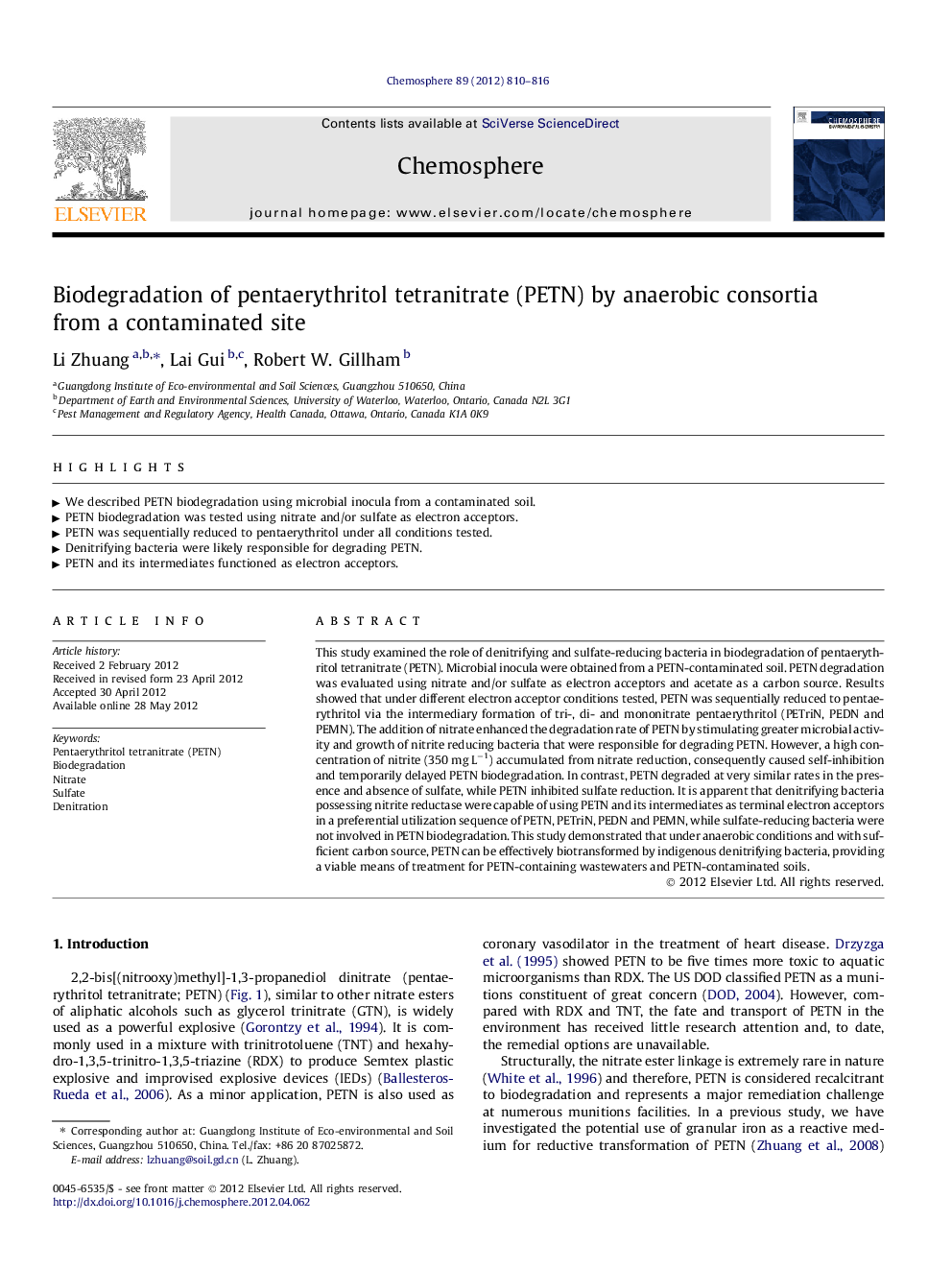| Article ID | Journal | Published Year | Pages | File Type |
|---|---|---|---|---|
| 4409950 | Chemosphere | 2012 | 7 Pages |
This study examined the role of denitrifying and sulfate-reducing bacteria in biodegradation of pentaerythritol tetranitrate (PETN). Microbial inocula were obtained from a PETN-contaminated soil. PETN degradation was evaluated using nitrate and/or sulfate as electron acceptors and acetate as a carbon source. Results showed that under different electron acceptor conditions tested, PETN was sequentially reduced to pentaerythritol via the intermediary formation of tri-, di- and mononitrate pentaerythritol (PETriN, PEDN and PEMN). The addition of nitrate enhanced the degradation rate of PETN by stimulating greater microbial activity and growth of nitrite reducing bacteria that were responsible for degrading PETN. However, a high concentration of nitrite (350 mg L−1) accumulated from nitrate reduction, consequently caused self-inhibition and temporarily delayed PETN biodegradation. In contrast, PETN degraded at very similar rates in the presence and absence of sulfate, while PETN inhibited sulfate reduction. It is apparent that denitrifying bacteria possessing nitrite reductase were capable of using PETN and its intermediates as terminal electron acceptors in a preferential utilization sequence of PETN, PETriN, PEDN and PEMN, while sulfate-reducing bacteria were not involved in PETN biodegradation. This study demonstrated that under anaerobic conditions and with sufficient carbon source, PETN can be effectively biotransformed by indigenous denitrifying bacteria, providing a viable means of treatment for PETN-containing wastewaters and PETN-contaminated soils.
► We described PETN biodegradation using microbial inocula from a contaminated soil. ► PETN biodegradation was tested using nitrate and/or sulfate as electron acceptors. ► PETN was sequentially reduced to pentaerythritol under all conditions tested. ► Denitrifying bacteria were likely responsible for degrading PETN. ► PETN and its intermediates functioned as electron acceptors.
